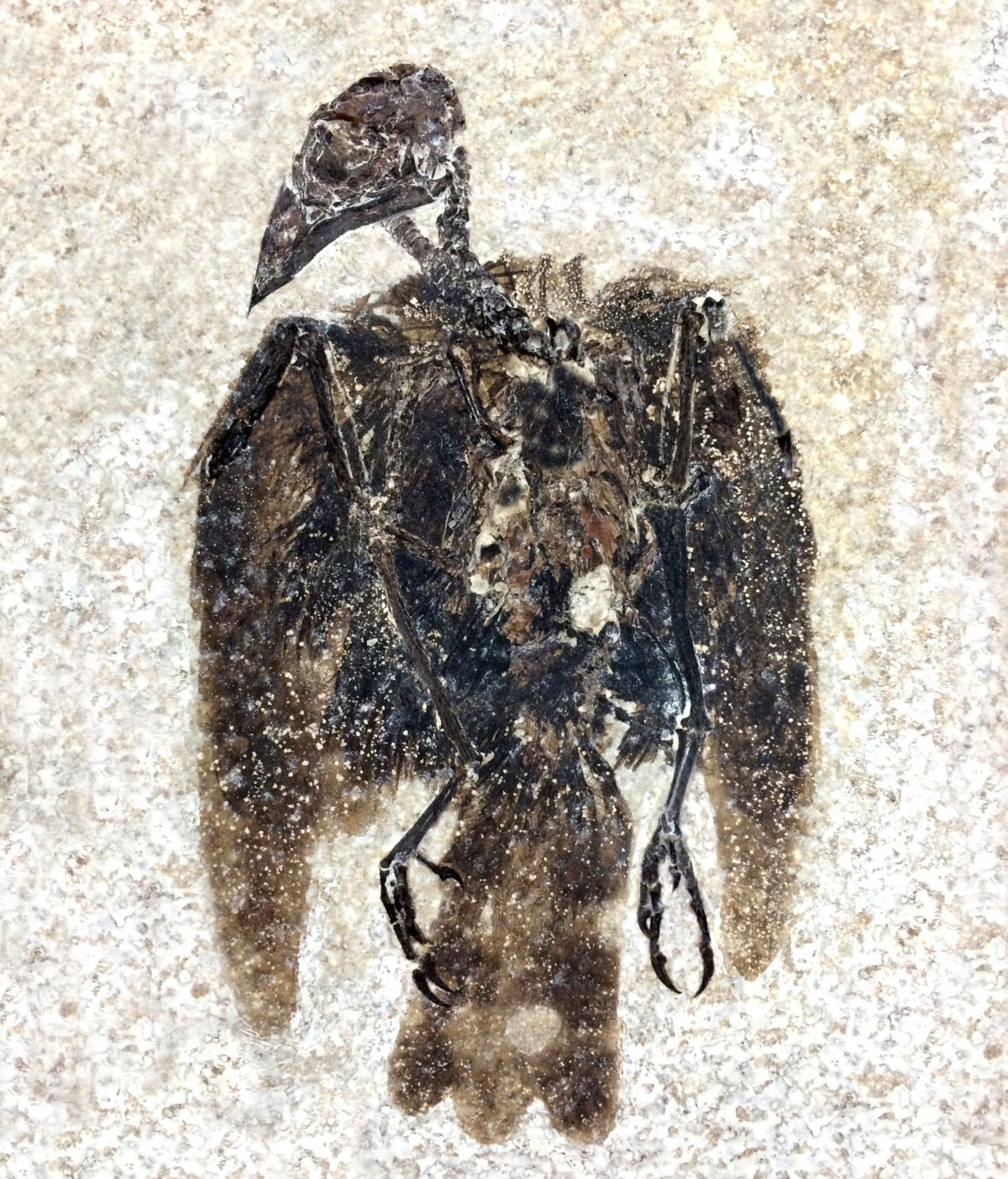
Scientists have discovered the 52-million-year-old remains of the earliest known ancestors of birds like the robin and sparrow in Wyoming.
A fossilized 47-million-year-old bird was also found by researchers in Germany. The remains of the two creatures in the passerine family date back to the early Eocene period, which unfolded between 54 million and 48 million years ago.
The birds are thought to be the earliest known examples of passerines, or perching birds. Nowadays, perching birds are ubiquitous: some 6,000 species exist. But a lack of fossil evidence means we known little about the winged ancestors of robins, sparrows, finches and crows, the authors wrote in a study published in the journal Current Biology.
Dr. Lance Grande, co-author of the study and Negaunee Distinguished Service Curator at Chicago's Field Museum, commented: "This [the 52 million-year-old specimen] is one of the earliest known perching birds. It's fascinating because passerines today make up most of all bird species, but they were extremely rare back then.
Dr. Daniel Ksepka, lead author of the study and curator at the Bruce Museum, Connecticut, told Newsweek: "Finding a nearly complete skeleton, with feathers too, is like hitting the lottery."
"It is difficult to express the feeling one gets from holding such an exquisitely preserved fossil," he said. "That something as tiny and delicate as a bird skeleton can survive for 50 million years is just amazing."
The bird found in Wyoming was named Eofringillirostrum boudreauxi ("Eofringillirostrum" meaning "dawn finch beak") in a nod to its status as the earliest known specimen of a bird with this type of bill. Luckily for paleontologists, the bird was found near Fossil Lake. Located around 15 miles west of Kemmerer, at Fossil Butte National Monument, diggers have have chanced upon specimens from fish to alligators and insects to pollen "locked in stone" in the lake bed. The German bird was named Eofringillirostrum parvulum, with the latter term meaning "small."

The beak indicates the sort of foods that the birds ate. Ksepka commented in a statement: "These bills are particularly well-suited for consuming small, hard seeds."
Grande continued: "The earliest birds probably ate insects and fish, some may have been eating small lizards.
"Until this discovery, we did not know much about the ecology of early passerines. E. boudreauxi gives us an important look at this."
Gerald Mayr, study co-author from the Senckenberg Research Institute, Frankfurt, Germany, explained in a statemement that it revealed the early ancestors of passerines already had bills in a variety of forms during the Eocene period.
"The great distance between the two fossil sites implies that these birds were widespread during the Eocene, while the scarcity of known fossils suggests a rather low number of individuals," said Ksepka.
Nowadays the diverse beak shapes of passerines enable them to snatch and gobble up insects in flight, peck for prey in the crevices of bark and drink nectar from flowers.
Lance pointed out to Newsweek that specimens like those found in Wyoming and Frankfurt are rare because of the lack of locations like Fossil Lake.
"Bird fossils from most localities are only isolated bones or fragments. This is because most fossil deposits are produced in aquatic environments. That is why aquatic animals like fishes are so much more common and usually better preserved than terrestrial birds."
Last year, paleontologists found the biggest fossilized dinosaur foot ever in Wyoming and nicknamed it Bigfoot. The study was published in the journal PeerJ.
The footprint belonged to a brachiosaur: one of the biggest land animals to live on Earth.
This article has been updated with comment from
Lance Grande and Daniel Ksepka.
Uncommon Knowledge
Newsweek is committed to challenging conventional wisdom and finding connections in the search for common ground.
Newsweek is committed to challenging conventional wisdom and finding connections in the search for common ground.
About the writer
Kashmira Gander is Deputy Science Editor at Newsweek. Her interests include health, gender, LGBTQIA+ issues, human rights, subcultures, music, and lifestyle. Her ... Read more
To read how Newsweek uses AI as a newsroom tool, Click here.








